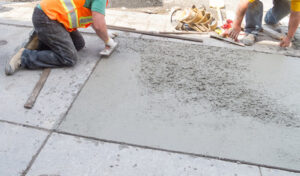When choosing a Motorcycle Accident Lawyer, look for one who specializes in personal injury law and who has experience representing clients in court. This will increase your chances of receiving maximum compensation for your injuries and losses.
A knowledgeable lawyer like Duluth Motorcycle Accident Lawyer will help you build your case by identifying all of your losses, including lost workdays, medical bills, bike repairs, and pain and suffering.

A motorcycle accident is a traumatic event for anyone involved. It can cause serious injuries and property damage. Choosing a lawyer with experience in this field is essential to getting the maximum compensation for your case.
An experienced attorney knows how to evaluate the evidence and identify potential sources of liability for a motorcycle crash. They also understand the laws in your state that apply to your situation and how they may impact your claim. They will use expert witnesses to help support your case. These may include medical personnel who can provide testimony about your injury, police officers who can provide information from their investigation, or engineers who can explain how something failed.
In addition to identifying liability, an experienced attorney can help you obtain the right amount of damages for your case. They will take into account your current and future expenses, such as medical bills, lost wages, and property damage. They will also consider any costs you may incur that are not immediately apparent, such as pain and suffering or diminished quality of life.
An experienced motorcycle accident lawyer can also negotiate with insurance companies and defend you in court if necessary. They have a keen understanding of the strategies that insurers use to avoid financial liability and can anticipate their arguments. This ensures that you are not unfairly blamed for your injury and receive the compensation you deserve. Before hiring an attorney, make sure to check their past success, gather recommendations, and schedule a one-on-one meeting. This will give you confidence that your attorney is a good fit for your needs.
Free consultation
A good Motorcycle Accident Lawyer will offer a free consultation, during which they will review your case and provide you with advice on how best to proceed. They will also help you navigate the legal system, dealing with insurance intricacies and arguing your case in court. Moreover, they will help you get the compensation you deserve.
An experienced motorcycle accident attorney will meticulously probe the accident scene and assemble evidence to establish liability. This could include sourcing images from the scene, obtaining relevant reports, and collecting witness testimonies and medical documentation. They will also ensure that they strategically time the launch of your claim until you reach the pinnacle of recovery, referred to as maximum medical improvement (MMI). This allows them to collate a comprehensive estimate of your losses and ensure that your claim is maximized.
They will also know the tactics that insurance companies use to shift blame onto motorcycle riders. This will enable them to anticipate and counter any arguments that the insurers might make, ensuring that you receive the full and fair compensation for your damages and injuries. In addition, they will ensure that the liens of your health care providers are properly handled so that they do not eat into your jury award or settlement.
Bike accidents are serious and can have devastating consequences. They can result in severe injuries including head trauma, severed or crushed limbs, paralysis, traumatic brain injury, and more. These injuries can have lifelong impacts and require specialized care, long-term assistance, and expensive medical bills. In such cases, you may be entitled to significant financial awards from the at-fault party. An experienced New York motorcycle accident attorney can guide you through the process and ensure that you are compensated fully for your losses.
Knowledge of the legal system
Having an experienced motorcycle accident lawyer on your side means you can rest easy knowing that your legal case is in good hands. They understand the nuances of insurance policies and can negotiate with insurance companies on your behalf to help you get the maximum amount of compensation for your injuries, property damage, and lost income. Their specialized knowledge also makes them a valuable asset during court proceedings.
In addition to navigating insurance company negotiations, a motorcycle accident attorney can help you file any paperwork needed for your case. They have extensive experience filing claims against negligent drivers, so they know what information is necessary for a successful outcome. They can also assist you with appealing a denied claim by the insurer.
A specialized motorcycle accident lawyer can also use expert witnesses to support your case. These experts can include medical personnel who testify about your injuries, police officers who provide information from their investigation, engineers who explain how something malfunctioned, and other professionals with specialized expertise. Having an expert on your side can make a huge difference in settling a claim or winning a trial.
In addition to the above benefits, a specialized motorcycle accident attorney will have in-depth knowledge of state laws that pertain to motorcyclists. This allows them to anticipate the tactics that the opposing party may use and develop a strategy that will be effective in achieving a positive outcome for your case. You can assess a potential lawyer’s skills and knowledge by scheduling a consultation with them. This will allow you to ask questions and determine if you feel comfortable working with them. You can also bring any documents related to your case to the meeting.
Ability to negotiate with insurance companies
A motorcycle accident attorney can help you navigate the complex process of obtaining compensation for your losses. They will review all documentation related to your case, provide research on relevant legal topics and take care of any communication with the insurance company. They can also help you appeal any denials of your claims.
During negotiations, an experienced lawyer will ensure that all economic and non-economic damages are covered in your settlement offer. This includes medical expenses, loss of earnings and pain and suffering. In addition, they can help you recover compensation for any other financial and emotional impacts caused by the accident.
Insurance companies often attempt to minimize their liability by denying your claim or attempting to downgrade your compensation. They may do this by disputing the severity of your injuries, arguing that you could have prevented the accident or blaming you for it. A skilled motorcycle accident lawyer will prevent these tactics by presenting solid evidence and taking control of any discussions with the insurance company.
A skilled motorcycle accident attorney can negotiate a fair settlement and make sure that all your losses are included in the award. In some cases, the insurer may try to limit your damages to cover only your medical bills and repair your bike. Your attorney will ensure that all your losses are taken into account, including lost wages, future earning potential and mental distress.
A motorcycle accident is a serious event that can result in severe injuries. These injuries can have long-term physical, psychological, and monetary consequences. A good attorney will be able to evaluate the severity of your injuries and calculate the amount of compensation you deserve based on those injuries.
Ability to represent you in court
Having a motorcycle accident lawyer on your side gives you peace of mind. They will guide you through the legal process and fight for your rights. They will also answer any questions you may have about your case. Having a lawyer on your side can also make the difference in a favorable settlement or verdict. If a fair settlement can’t be reached, your attorney will be ready to take the case to court.
Choosing the right attorney will ensure you get the compensation you deserve. They will work to obtain compensation for your medical bills, property damage, lost income, and noneconomic damages such as pain and suffering. They will also investigate your accident and determine what specific claims for damages you are entitled to based on your injuries.
Dealing with insurance companies after a motorcycle accident can feel like stepping into the ring with a heavyweight champion. They have teams of lawyers and adjusters that are trained to minimize payouts. Your motorcycle injury lawyer will be your seasoned trainer in the ring, shielding you from their questionable tactics and negotiating a fair settlement on your behalf.
If the negligent party’s actions were particularly egregious, your lawyer may be able to pursue punitive damages. This type of damage is designed to punish the defendant and deter others from engaging in similar conduct.
When selecting an attorney, ask for a list of their past clients. Call these clients and ask them about their experience with the attorney. Also, ask if they would recommend the attorney to anyone. Having a recommendation from a friend or family member is a good way to ensure you’re working with someone who has your best interest at heart.








